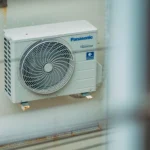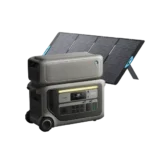It’s easy to fall for how a large fountain looks. The spray catching the sunlight, the gentle sound in the background—it seems like an obvious upgrade for a pond or Large pond fountains that feels too still. But before getting swept up in the visual appeal, it helps to slow down and think through what it actually takes to make one work.
They’re not simple. These large pond fountains aren’t just plug-in-and-play decorations. They’re more like outdoor machines—constantly running, exposed to weather, and always pulling in whatever’s floating in the water. If you’re considering adding one, it’s worth asking a few hard questions first.
Large Pond Fountains Are Built for More Than Just Looks
The difference between a small decorative unit and a large pond fountain isn’t just size. It’s everything—motor strength, submersible pump type, spray height, anchoring, wiring. All of it matters.
For bigger ponds, stagnant water becomes a real problem. Without proper flow, oxygen levels drop, and algae builds fast. A good fountain doesn’t just fix the look. It reshapes how the whole pond behaves.
So, yes, the spray looks great—but function comes first. That’s what separates a proper system from a garden centre novelty.
You might also like: A fresh take that complements what you just read.
Will It Fit the Pond You Have?
It’s not uncommon to see someone install a large fountain in a pond that barely meets the basic depth requirement. Then they wonder why the spray doesn’t rise or why the motor burns out by autumn.
Ask yourself:
- Is your pond at least four feet deep?
- Is the bottom mostly clear of thick sludge?
- Is there enough room around the centre for the water to fall cleanly?
If the answer is “not really” to any of those, then something like a floating fountain might be more practical. They’re lighter, easier to shift around, and better suited for mixed-depth setups.
Shape and Spray Pattern: More Than Aesthetic
Not all water patterns are the same. It might seem minor, but the direction and width of the spray change how the fountain sounds, how it lands, and how well it circulates the water.
For instance:
- In long, narrow ponds, tall vertical jets might just shoot water straight back onto the bank.
- In round or open ponds, fan patterns tend to spread better without oversplashing.
And then there’s wind. A breeze can throw a high spray right into your seating area or your neighbour’s fence. Think it through before going for height.
What Will It Sound Like?
This one often gets ignored. Buyers expect either silence or soft background noise. But larger fountains create a much louder presence than people realise.
Water hitting water, especially from a decent height, can sound more like a waterfall than a trickle. Some love it. Others don’t.
It’s not a bad idea to test something smaller first—or check one out in a similar setting. Sound has a way of becoming either soothing or intrusive, depending on where you sit and how close it is to your house.
Power and Cost: The Reality Over Time
Larger pond fountains use stronger motors and run for longer hours. This means one thing—higher electricity bills.
Some models offer energy-saving modes or timers, but if yours doesn’t, the costs can quietly stack up. People often overlook this part, but it matters when you plan to keep the thing running all summer.
One way to manage this is to run the unit during daylight only. You still get the visual and circulation benefits, but you save on overnight consumption.
Setup Isn’t Always Smooth
Marketing tends to promise “easy installation.” But in practice, it can be a little rough.
Cables need waterproofing. Anchors need to be placed just right. The weight might surprise you. And if you’re working with an uneven pond floor, that introduces another layer of complication.
You don’t need to be an expert, but it does help to read more than just the quick-start guide. And maybe call in someone local who’s done this before. It’s not admitting defeat. It’s just making sure your weekend doesn’t get eaten up by trial and error.
Cleaning: More Than Just a Seasonal Job
Leaves, dust, algae—everything ends up in the pump eventually. Once that happens, performance drops, and if you leave it too long, the motor’s lifespan shrinks fast.
Regular checks every couple of weeks help. Monthly nozzle cleaning is also a safe bet. And in colder regions, you’ll want to pull the fountain out before freeze sets in.
The biggest mistake is assuming maintenance stops after installation. The truth? That’s when the real work begins.
Is It Worth It?
That’s a personal call. For some, the cost and upkeep are part of the charm. For others, it’s just another thing to manage. But when a large pond fountain is placed in the right setting and cared for properly, the result is impressive.
Not just visually—but in terms of how the water moves, how clear it stays, and how the space feels. It becomes a focal point. Something people notice without needing to say much about it.
There’s no denying it takes commitment. But if the pond is big enough, and the goal is more than just looks, it’s often the right move.
Large pond fountains aren’t decorations. They’re functional systems that need the right match of size, depth, power, and patience. If something feels off in any of those areas, it’s better to wait or scale down than rush a setup that doesn’t fit.
Some ponds simply aren’t ready. And that’s okay. But if yours is—then getting it right matters.
There’s plenty more where that came from—browse our other helpful content!






